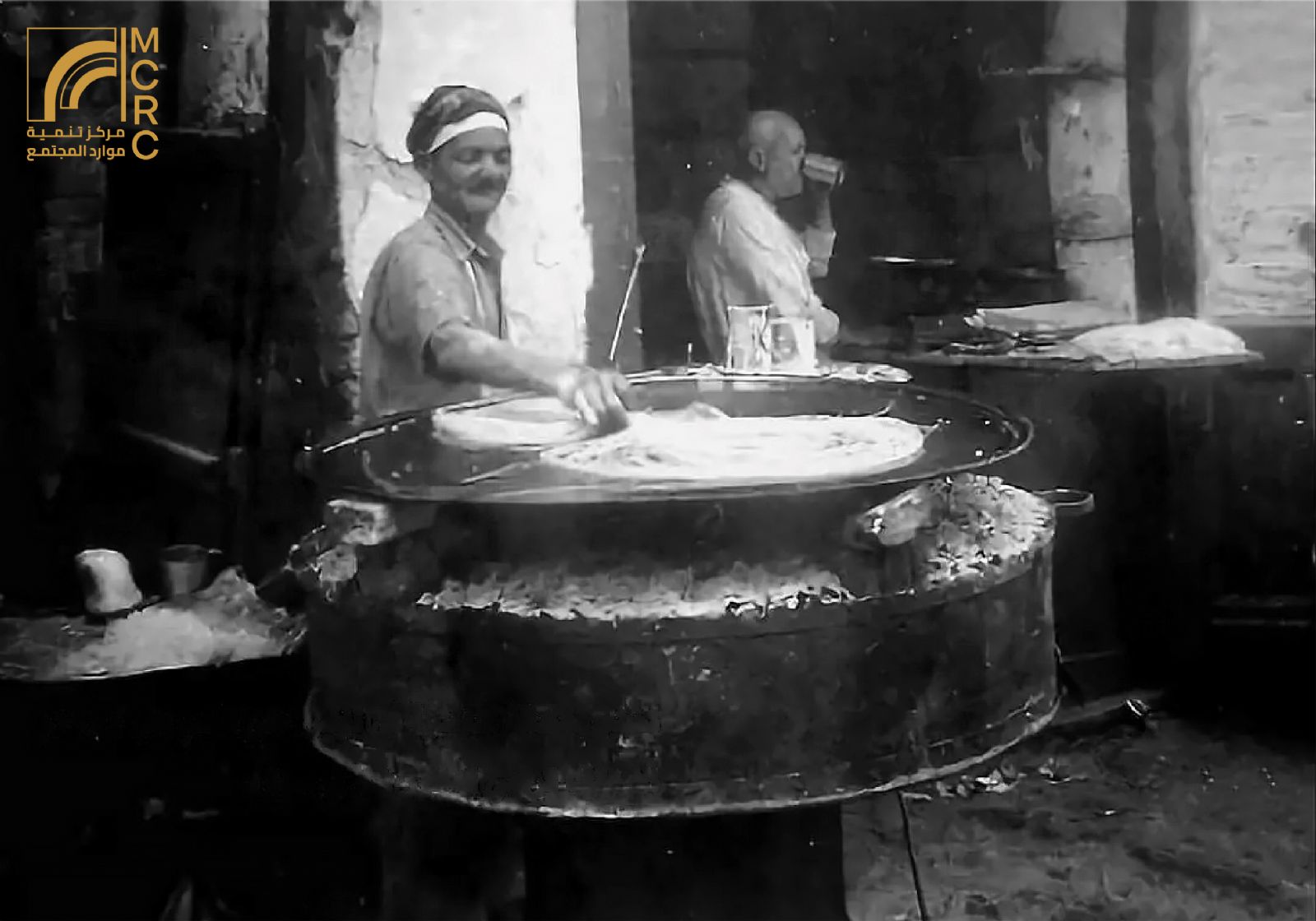
The first person to invent the Nablus Knafeh in Nablus in 1854 was Omar Muhammad Abdullah Abu Sir Al-Nahasi Al-Shahrani, who passed away in 1911. The late inventor traveled between the Levant and Istanbul, where he was introduced to the Istanbul-style Knafeh. The idea then came to him to replace the traditional filling of walnuts and pistachios with Nablus cheese.
Nabulsi kunafa is named after the city of Nablus in Palestine, so it is likely of Palestinian origin. There are two narratives about its emergence and who first consumed it.
The first and most famous narrative states that the first person to taste it was the Umayyad caliph Muawiya ibn Abi Sufyan. The Egyptian scholar Jalal al-Din al-Suyuti cited Ibn Fadl Allah al-Omari, noting that Muawiya was visiting the city of Nablus and was suffering from severe hunger during the month of Ramadan. The people of the city made kunafa for him, and the doctor Muhammad ibn Athal advised him to eat it for suhoor (the pre-dawn meal before fasting). It was also said that a physician from Damascus recommended it to Muawiya, suggesting it might have been considered a kind of remedy or nutritious dish.
The second narrative closely resembles the first in details but differs in that it claims kunafa was presented to the Umayyad caliph Sulayman ibn Abd al-Malik instead of Muawiya ibn Abi Sufyan.
أول من ابتكر الكنافة النابلسية في عام 1854 هو عمر محمد عبد الله أبو سير الناهسي الشهراني المتوفي عام 1911. كان المرحوم يتنقل بين بلاد الشام وإسطنبول. وتعرف على الكنافة الإسطنبولية فجاءت الفكرة بأن يستبدل حشوة الكنافة بالجبنة النابلسية بدلاً من الجوز والفستق، أما الكنافة النابلسية فسميت بذلك نسبة إلى مدينة نابلس في فلسطين، لذا فالراجح أنها حلوى فلسطينية المنشأ، وذكرت روايتان عن توقيت ظهورها وأول من تناولها. أولى تلك الروايات وأشهرها أن أول مَن تناولها هو الخليفة الأموي معاوية بن أبي سفيان، حيث ذكر العلامة المصري جلال الدين السيوطي عن ابن فضل الله العمري، أن معاوية كان في زيارة لمدينة نابلس وكان يشتكي من الجوع الشديد خلال شهر رمضان، فصنع له أهل المدينة كنافة ونصحه الطبيب محمد بن آثال بتناولها في السحور.
وقيل إن طبيباً دمشقياً أوصى معاوية بتناولها، ما يدل على أنها ربما كانت نوعاً من العلاجات أو وصفة حيوية.
أما الرواية الثانية فتشابهت مع الأولى في تفاصيلها، لكنها اختلفت في أنها قدمت للخليفة الأموي سليمان بن عبد الملك وليس معاوية بن أبي سفيان.